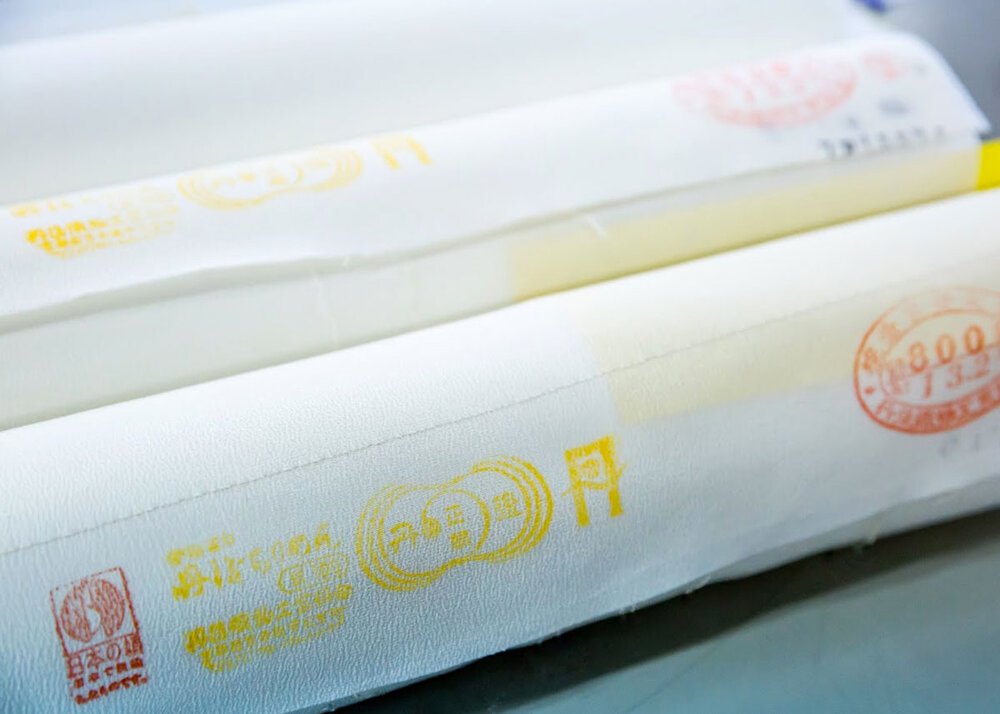Tango Chirimen Silk 丹後縮緬
The traditional silk weaving in Kyoto can be traced back to the 5th century brought from China. A little north of center of Kyoto, the Tango Region, an area perfect for silk production due to its rainy and humid climate, has been weaving silk from cocoons since that time. Today the Tango Region produces the largest amount of silk in all of Japan – 60% of the silk for Japan’s kimono industry is produced here (and Hama – the other side of Lake Biwa from Kyoto). One third of the raw silk produced in this region is used to create Tango Chirimen. FUN FACT: It takes 3,000 silk cocoons to make a single kimono! (I cannot do the math how many cocoons they have…) Every single piece of cloth is inspected closely by hand using traditional methods to ensure absolute and consistent quality. Any silk that reaches their highest standards is then stamped with a local production mark stating ‘Tango Chirimen,’ a mark of great pride and status.
Chirimen is a Japanese textile made of flat woven silk known as silk-crepe. Untwisted raw silk is weaved with raw silk wefts that have been twisted 3000 - 4000 times per yard. The yarn is then compressed and refined to remove impurities. The process also untwists the raw silk, bringing out the signature bumpy texture, known as shibo. It differs from other kimono silk as it is less prone to winkling, feels soft on the skin, and also incredibly durable, and is of such quality that the silk can be dyed many times. Additionally, due to the bumpy texture of the fabric, the silk diffuses light in a different way, making for a deeper overall tone.
You can find chirimen and these traditional techniques being used for products other than kimono including book covers, home furnishings, and fashion accessories. The durability of the fabric lends itself well to creating hard-wearing everyday items.


